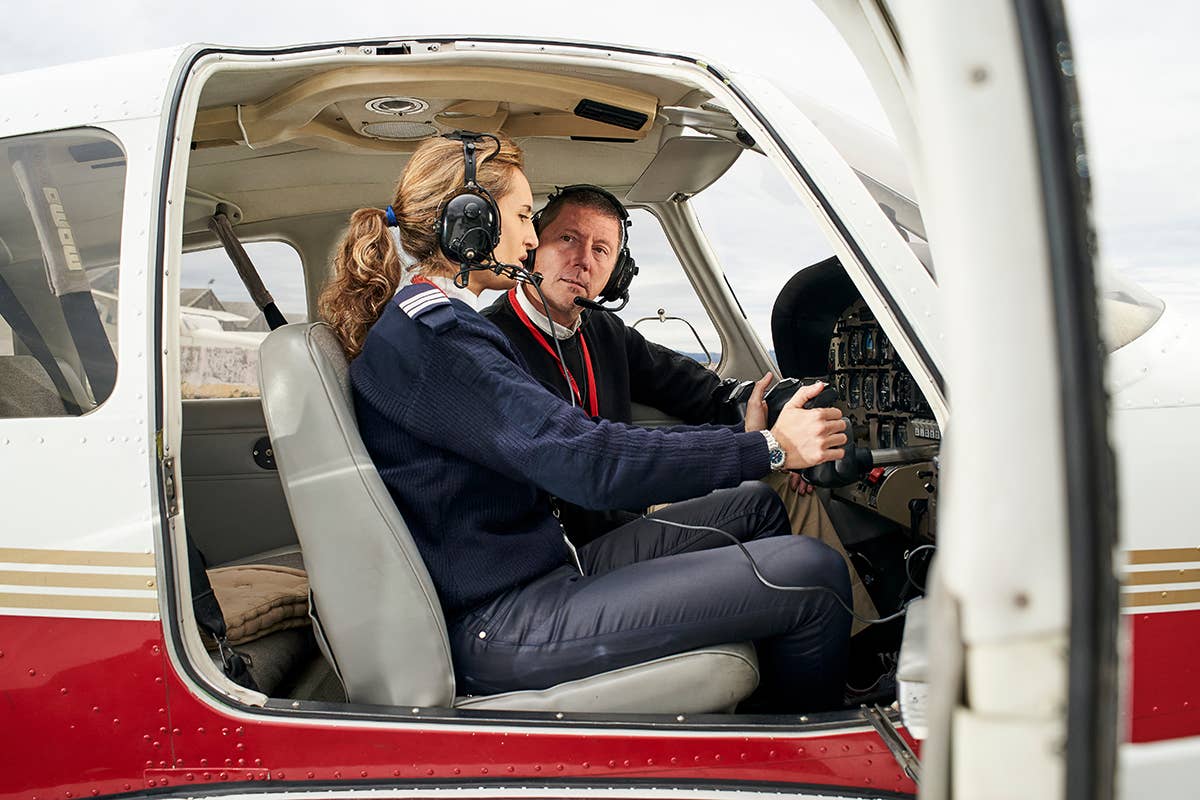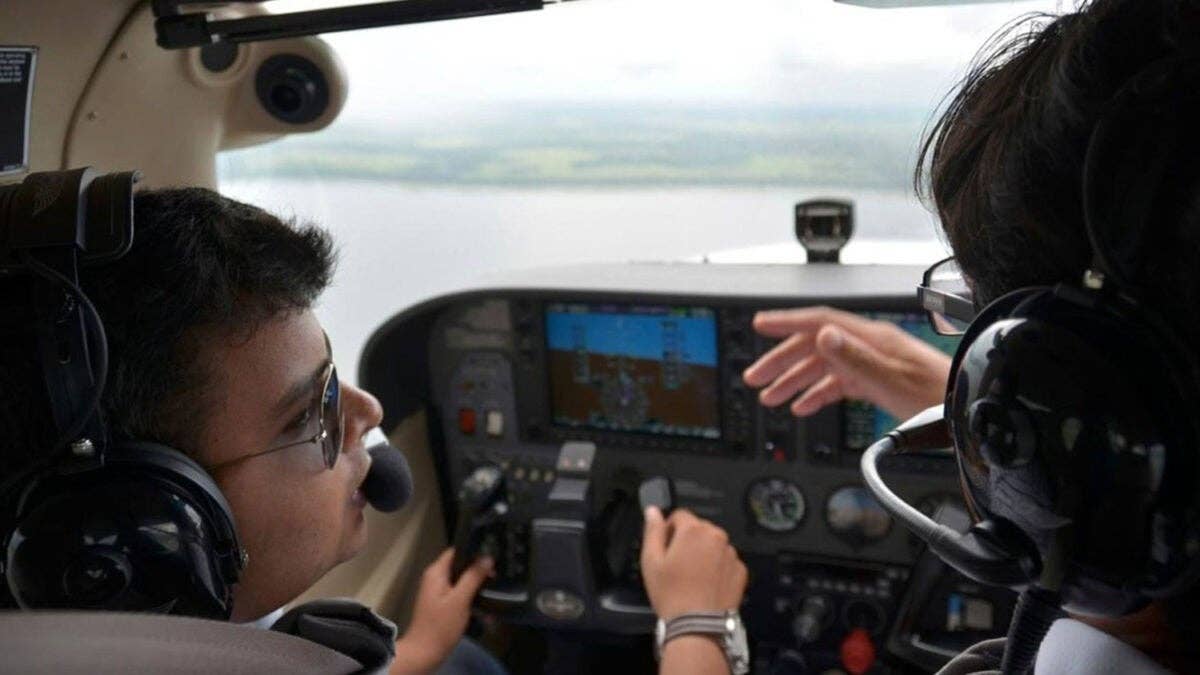Non-Aviation Life Can Help Your CFI Tailor Your Lessons
There are skills from day-to-day activities that can help you in the cockpit.

To figure out the best approach for your training, your CFI needs to know a little bit about you. [File photo: Adobe Stock]
When adults meet for the first time—after the exchange of names—the next question is often, "What do you do for a living?" When your flight instructor asks this, they may be using that information to develop the best approach for your training.
There are certain skills from the non-aviation world that can help you in the cockpit.
Hands and Feet Working Together
“Anyone who already knows how to drive a car will try to steer with the yoke, completely forgetting about their feet.”
I have noticed that the people with professions that require an extraordinary amount of coordination between hands and feet—such as operators of bulldozers, forklifts, excavation equipment or construction cranes—usually pick up the relationship of the rudder pedals and yoke/stick/control wheel for aircraft control quickly. That’s because in order to operate heavy equipment like this, you need to utilize the controls as if the machine were an extension of your body. Depth perception—critical in the landing phase of flight—is also a skill developed when using heavy equipment, because it often has an extension that is several feet in front of the operator.
Meet Your Feet
Anyone who already knows how to drive a car will try to steer with the yoke, completely forgetting about their feet. For those learners, I suggest that between flights, when they are away from the airport, they do an exercise to get in touch with their feet. You can do this by sitting in a chair and rolling a full water bottle or a soccer ball between your feet, focusing on the coordination of foot to foot without looking down.
I learned this exercise when I was a fledgling field hockey goalie—that position is all feet. It worked for me, so I figured it would help my flight students learn to use the rudder pedals. I have had good results with it.
Checklists Galore
Learners who have highly technical careers—such as software development or medicine—often do well with checklists because they think in a linear flow. The ones in the medical field will sometimes apply their knowledge of anatomy to create analogues for the aircraft systems—oil is the aircraft's blood, and just like blood in the human body, it cools you down and carries away waste products. My favorite was the nurse who said the fuel system of the Cessna 172 resembled the female reproductive system—she understood it better when she put it into those terms.
Musicians Can Stay Ahead of the Aircraft
Learners who can read music—professional musicians and those who do music as a hobby— understand the concept of staying ahead of the airplane, because when you sight read a piece of music, you’re playing one measure while reading ahead to the next so you know what's coming. Do you take a breath? Get ready to move from the snare drum to the toms? This skill of mental preparation and thinking ahead can be applied in the airplane.
Helpful Instincts
It is said the best way to learn something is to teach it to someone else. Every human is a teacher to some degree. As you read this, think about the things you have taught someone to do—maybe it was teaching a sibling how to tie their shoes, or throw a baseball, or set up a smartphone.
Parents are natural teachers. If this were not so, the human race would have died out eons ago as children would have been running into streets and putting their fingers in light sockets because they were not warned against these activities.
Tap into the parental instinct. I learned this with a learner who was the father of four. I inherited him from another CFI who couldn't seem to get him to his first solo. He was taciturn at all times—he didn't verbalize the checklist or make radio calls sometimes unless I prompted him to do so. The only time he opened up was when he talked about his children. I asked him to talk me through takeoffs and landings like I was his 7-year-old—“Let Daddy show you how to fly the airplane.” That did the trick, and it earned him the callsign of “Papa Bear.”
High Expectations, High Frustration
When the learner is accomplished in their professional life, they may become easily frustrated if they struggle with learning to fly. The best way I’ve addressed this is to remind the learner that it took them some time to reach the top of their game as a (insert career here) and it has probably been a while since they did something as complicated as flying for the first time. Then I break the tasks and the study into bite-sized pieces, and always reference how these tasks—such as clearing turns—fit into the bigger picture. With a little practice, they become successful in the air too.

Sign-up for newsletters & special offers!
Get the latest FLYING stories & special offers delivered directly to your inbox






